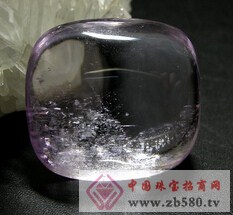
1. Application of spodumene in porcelain bricks
As a non-glazed low porosity product, “Qualified Brick†has quite good mechanical properties such as impact, hardness and durability. It is the preferred object for the tile series. Porcelain tiles differ from glazed tiles and sanitary wares in that they can be used directly in the body to reduce the firing temperature.
Recent studies have found the advantage of replacing some nepheline syenite with spodumene.
In the 1990s, Italian experts studied that the addition of spodumene to ceramic tiles would achieve an increase in vitrification in the production process and a reduction in line shrinkage during the sintering process to reduce product dimensional deviation. In the sense of anti-fouling, the surface quality of the floor tiles is improved and the mechanical strength is enhanced.
Second, the role of spodumene in the vitrified ceramic tile (VHT) body formula
Fully vitrified, unglazed polished tiles require a firing temperature of approximately 1200 ° C and a sintering time of 45 minutes. Due to such a short period of time, conventional fluxes appear to be ineffective, and the use of spodumene will contribute to melting and material densification.
Recently, Southeast Asian countries have made a series of industrial appraisals to verify the above conclusions. Nowadays, some manufacturers in China replace x-type feldspar with xanthanite, which accounts for 10% of the weight of the body. The results are as follows: the productivity is shortened due to shortening the firing cycle, and the firing temperature is lowered by 25 ° C. The color pollution resistance of the green body is improved by 90%, the mechanical strength is enhanced, and the color is more "three-dimensional".
Third, the application of spodumene in wall and floor glaze
Adding 2~12% spodumene to the glaze (or frit) formula, instead of the corresponding raw materials such as feldspar, can play the following roles:
1. Reduce the firing temperature (fluxing), save energy and extend furnace age;
2. Reduce the melt viscosity, improve the high temperature fluidity and vitrification, improve the anti-pollution ability, and enhance the glaze strength and smoothness;
3. Reduce the thermal expansion coefficient, overcome the glaze crack and improve the thermal stability;
4. Improve whiteness and enhance gloss;
5. Improve chemical stability and acid resistance.
Mesh With Flocking,Polyester Spandex Mesh,Polyester Spandex Fabric,Polyester Spandex Mesh With Flocking
SHAOXING LANGDENG IMP&EXP CO.,LTD , https://www.ldfabric.com